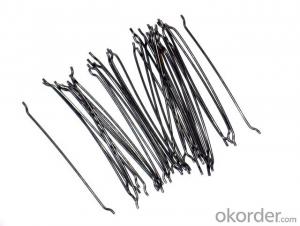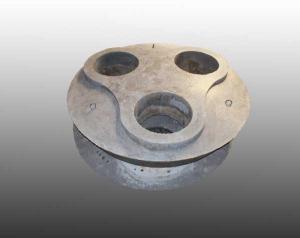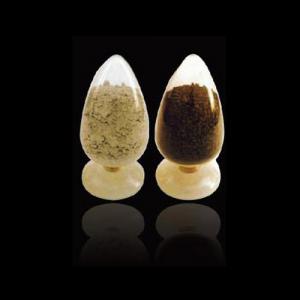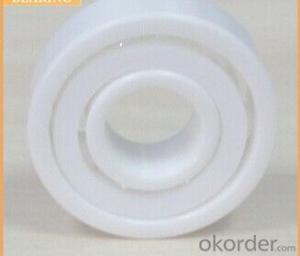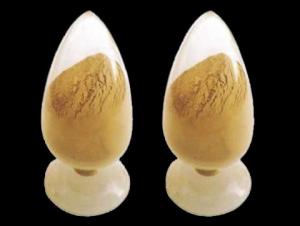Magnesium Calcium Gunning for Ladle and Tundish
- Loading Port:
- China Main Port
- Payment Terms:
- TT or L/C
- Min Order Qty:
- 2 MT m.t.
- Supply Capability:
- 5000 Tons Per Month m.t./month
OKorder Service Pledge
OKorder Financial Service
You Might Also Like
General Information of Magnesium Calcium Gunning for Ladle and Tundish
Made as per international standards, ALRE magnesium calcium gunning forladle and tundish is known for its excellent corrosion resistance, long operating life and high refractoriness.
Technical data of Magnesium Calcium Gunning for Ladle and Tundish
Item | Magnesium Calcium Gunning | |||
CPL-1 | CPL-2 | |||
Al2O3(%)≥ | — | — | ||
MgO(%)≥ | 75-80 | 70-80 | ||
CaO(%)≤ | 5-10 | 2-10 | ||
SiO2(%)≤ | 4 | 10 | ||
SiO2+ Fe2O3+ Al2O3(%)≥ | ||||
Bulk Density (g/cm3)≥ | — | — | ||
C.C.S. (MPa) ≥ | 110℃×24hrs | — | — | |
1500℃×3hrs | — | — | ||
M.O.R.(MPa) ≥ | 110℃×24hrs | — | — | |
1500℃×3hrs | — | — | ||
Refractoriness (℃) ≥ | 1790 | 1790 | ||
Grain Size (mm) ≤ | — | — | ||
Permanent Linear Change(%) | 1500℃×2hrs | — | — | |
1500℃×3hrs | — | — | ||
Life time (hr) | — | — | ||
Production line and Packing of Magnesium Calcium Gunning for Ladle and Tundish
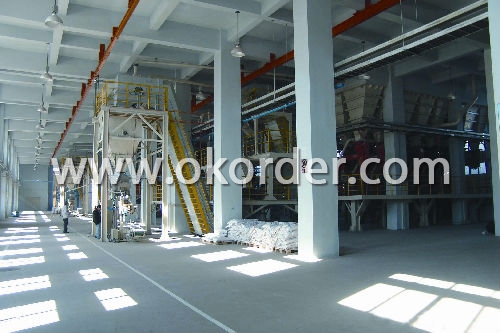
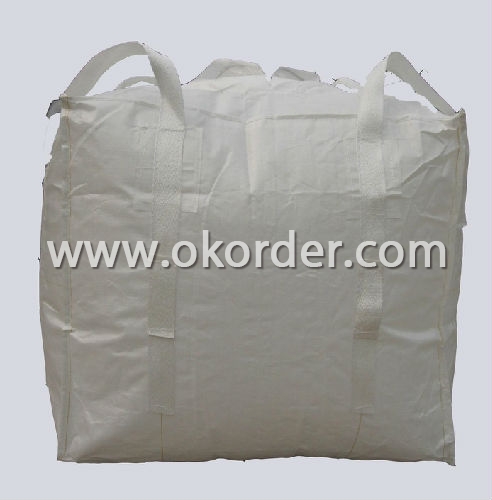
Feature of Magnesium Calcium Gunning for Ladle and Tundish
Long operating life
High refractoriness
Excellent corrosion resistance
Application of Magnesium Calcium Gunning for Ladle and Tundish
ALRE magnesium calcium gunning forladle and tundish can be used widely in steel and iron industry.
- Q:How are monolithic refractories manufactured?
- Monolithic refractories are manufactured by combining various raw materials, such as aggregates, binders, and additives, with water to create a workable mixture. This mixture is then shaped into the desired form, either by casting, gunning, or ramming. Afterwards, the shaped refractory is dried and fired at high temperatures to achieve the desired strength and thermal properties. The manufacturing process of monolithic refractories allows for flexibility in design and installation, making them suitable for a wide range of applications.
- Q:How do monolithic refractories provide thermal insulation in the iron and steel industry?
- Monolithic refractories play a crucial role in providing thermal insulation in the iron and steel industry. These refractories are commonly used to line the furnaces and other high-temperature equipment used in the production processes. One way monolithic refractories provide thermal insulation is by their ability to withstand high temperatures without degrading or melting. They are designed to have high heat resistance, which allows them to be used in environments where temperatures can reach several thousand degrees Celsius. By withstanding these extreme temperatures, the refractories prevent the transfer of heat to the surrounding structure, thus providing insulation. Another way monolithic refractories provide thermal insulation is through their low thermal conductivity. These materials have a low thermal conductivity, meaning they are not efficient in conducting heat. Instead, they trap the heat within their structure and minimize its transfer to the surrounding equipment or environment. This characteristic helps to maintain the temperature inside the furnaces and other high-temperature equipment, allowing for efficient and controlled metal production. Furthermore, monolithic refractories can be applied as a thick lining layer, which creates an additional barrier between the high-temperature environment and the surrounding equipment. The thickness of the refractory lining helps to minimize heat transfer and acts as a buffer, reducing the impact of high temperatures on the structural integrity of the equipment. In addition to providing thermal insulation, monolithic refractories also offer excellent resistance to chemical attack and mechanical wear, which are common challenges in the iron and steel industry. This resistance ensures the longevity of the refractory lining, allowing for consistent and reliable insulation over time. Overall, monolithic refractories provide thermal insulation in the iron and steel industry through their high-temperature resistance, low thermal conductivity, thick lining layer, and resistance to chemical attack and mechanical wear. These properties contribute to maintaining the desired temperature inside the equipment and protecting the surrounding structure from the intense heat generated during metal production processes.
- Q:How do monolithic refractories withstand the thermal cycling in coke oven applications?
- Monolithic refractories are specifically designed to withstand the harsh conditions of thermal cycling in coke oven applications. Thermal cycling refers to the repetitive heating and cooling cycles that occur in these high-temperature environments. One of the key factors that enables monolithic refractories to withstand thermal cycling is their composition. They are typically made from a combination of different refractory materials, such as high-alumina, silica, and magnesia, which provide excellent thermal shock resistance. These materials have low thermal conductivity and high thermal expansion properties, allowing them to expand and contract without cracking or spalling under extreme temperature changes. Moreover, monolithic refractories have excellent bonding and adhesion properties, allowing them to form a strong and cohesive structure. This ensures that they can withstand the mechanical stresses caused by the thermal cycling process. Additionally, monolithic refractories can be installed in place through various techniques, such as gunning, casting, or ramming, which further enhances their resistance to thermal cycling. Furthermore, the presence of specialized additives and bonding agents in monolithic refractories improves their resistance to thermal cycling. These additives can enhance the refractory's ability to absorb thermal shock and minimize cracking, thus increasing its durability and longevity in coke oven applications. Overall, monolithic refractories' ability to withstand thermal cycling in coke oven applications can be attributed to their carefully formulated composition, strong bonding properties, and the incorporation of specialized additives. These characteristics make them highly reliable and suitable for the extreme temperature fluctuations experienced in coke oven operations.
- Q:How do monolithic refractories mitigate heat loss in iron and steel operations?
- Monolithic refractories are highly effective in mitigating heat loss in iron and steel operations due to their unique properties and composition. These refractories are made from a single, continuous material, making them resistant to cracks and gaps that could allow heat to escape. One key advantage of monolithic refractories is their excellent thermal conductivity and insulation properties. They have a low thermal conductivity, which means they can effectively restrict the transfer of heat from the hot areas to the cooler surroundings. This insulation property helps maintain high temperatures within the iron and steel operations, reducing heat loss to the environment. Another factor that contributes to the heat loss mitigation is the ability of monolithic refractories to form a tight seal with the metal structures they are applied to. They adhere well to the surfaces and fill in any gaps or irregularities, creating a solid barrier against heat loss. This seal minimizes the possibility of heat escaping, ensuring that the energy generated within the operations is effectively utilized. Furthermore, monolithic refractories have high resistance to thermal shock. In the iron and steel industry, extreme temperature fluctuations are common, which can lead to material deterioration and cracks. Monolithic refractories, with their high thermal shock resistance, are able to withstand these rapid temperature changes without compromising their structural integrity. This ensures the longevity and effectiveness of the refractories in mitigating heat loss. Overall, monolithic refractories play a crucial role in mitigating heat loss in iron and steel operations by providing excellent insulation, forming a tight seal, and withstanding thermal shock. These properties allow the refractories to maintain high temperatures within the operations, optimize energy utilization, and enhance the overall efficiency of the processes.
- Q:Can monolithic refractories be used for the lining of continuous casting tundishes and molds?
- Yes, monolithic refractories can be used for the lining of continuous casting tundishes and molds. Monolithic refractories are versatile and can be shaped or molded to fit the specific requirements of the tundish and mold lining. They offer excellent thermal shock resistance and high-temperature stability, making them suitable for the harsh conditions of continuous casting. Additionally, monolithic refractories have low porosity, which helps prevent the penetration of molten metal and promotes longer service life for the tundish and mold lining.
- Q:How are monolithic refractories installed and repaired in iron and steel applications?
- Monolithic refractories in iron and steel applications are installed by carefully preparing the surface, followed by applying and compacting the refractory material using various techniques like gunning, casting, ramming, or shotcreting. In terms of repair, damaged sections are usually removed and replaced with fresh refractory material, ensuring proper bonding and compaction to restore the integrity of the lining. Regular inspections and maintenance are essential to identify and address any potential issues promptly.
- Q:How do monolithic refractories withstand high temperatures and thermal cycling?
- Monolithic refractories withstand high temperatures and thermal cycling due to their unique composition and structure. They are made from a single piece or material, which eliminates joints or seams that could be vulnerable to thermal stress. Additionally, they are designed with a high thermal conductivity and low thermal expansion, allowing them to expand and contract without cracking or spalling. This enables them to maintain their integrity and mechanical strength even under extreme temperature fluctuations, making them highly durable and suitable for applications in industries such as steel, cement, and petrochemical.
- Q:How do monolithic refractories withstand the alkali attacks in cement kiln applications?
- Due to their unique composition and structure, monolithic refractories are capable of withstanding alkali attacks in cement kiln applications. Unlike traditional brick refractories, these refractories are made from a single material, resulting in a more uniform and dense structure. When exposed to alkali attacks in cement kilns, monolithic refractories create a barrier against the corrosive alkali substances by forming a protective layer on the surface. This protective layer is formed through reactions between the alkali substances and the refractory material, leading to the development of a stable compound that resists further attacks. Additionally, monolithic refractories possess high chemical resistance, allowing them to endure the aggressive conditions inside cement kilns. Their low porosity design minimizes the infiltration of alkali substances into the refractory material, reducing the risk of alkali attacks and extending the lifespan of the refractory lining. Furthermore, monolithic refractories are frequently manufactured using materials with elevated melting points, such as alumina, silica, and magnesia. These materials exhibit exceptional thermal stability, enabling the refractories to withstand the high temperatures in cement kilns without significant deterioration. This thermal stability is crucial in preventing the formation of cracks and spalling, which could permit alkali penetration and subsequent harm to the refractory lining. In conclusion, monolithic refractories are specifically engineered to resist alkali attacks in cement kiln applications by forming a protective layer, possessing high chemical resistance, and demonstrating excellent thermal stability. These characteristics make them an ideal choice for lining cement kilns, ensuring long-term performance and durability.
- Q:How do monolithic refractories contribute to energy efficiency in iron and steel manufacturing?
- Monolithic refractories contribute to energy efficiency in iron and steel manufacturing through their superior insulation properties and ability to withstand high temperatures. These refractories minimize heat loss, reducing the energy required for heating and maintaining the desired temperature in the manufacturing process. Additionally, their durability and resistance to thermal shock help to extend the lifespan of furnaces and other equipment, reducing the need for frequent repairs or replacements, further enhancing energy efficiency.
- Q:What are the recommended installation techniques for monolithic refractories?
- The recommended installation techniques for monolithic refractories depend on the specific type and application of the refractory material. However, there are some general guidelines that can be followed for most monolithic refractory installations. 1. Surface Preparation: Before installing monolithic refractories, it is crucial to ensure that the surface is clean, dry, and free from any loose particles or contaminants. This can be achieved by removing any existing refractory materials, cleaning the surface thoroughly, and allowing it to dry completely. 2. Mixing: Monolithic refractories are typically supplied in a dry or wet form, depending on the specific material. If the refractory is supplied in a dry form, it needs to be mixed with water or a suitable liquid binder to form a workable consistency. It is important to follow the manufacturer's guidelines for the correct mixing ratio and mixing time to ensure proper bonding and setting of the refractory material. 3. Application: The application technique for monolithic refractories can vary depending on the specific material and the desired installation method. Some common techniques include troweling, gunning, ramming, and casting. - Troweling: This technique involves manually applying the refractory material using a trowel. It is typically used for thin linings or patching small areas. - Gunning: Gunning is a method of applying refractory material using a gunning machine or a hand-held gun. It is suitable for large areas or areas that are difficult to access. The refractory material is mixed with water or a liquid binder and sprayed onto the surface at a high velocity. - Ramming: Ramming involves compacting the refractory material into place using a ramming tool or a pneumatic hammer. It is commonly used for forming furnace linings or repairing damaged areas. - Casting: Casting refers to pouring the refractory material into a mold to form a desired shape or lining. It is often used for creating complex shapes or large-sized components. 4. Curing and Drying: After the refractory material is applied, it needs to be properly cured and dried to achieve its maximum strength and thermal properties. The curing and drying process can vary depending on the specific material, but typically involves controlled heating at a gradual rate to remove any remaining moisture and to allow the refractory to set and harden properly. It is important to note that these are general guidelines, and it is always recommended to consult the manufacturer's instructions and specifications for the specific monolithic refractory material being used. Following the recommended installation techniques will help ensure the proper performance and longevity of the refractory lining.
1. Manufacturer Overview |
|
|---|---|
| Location | Henan, China |
| Year Established | 2007 |
| Annual Output Value | Above US$ 200 Million |
| Main Markets | North America;Asia;Western Europe;Africa;Russia;Middle East |
| Company Certifications | ISO 9001:2008 |
2. Manufacturer Certificates |
|
|---|---|
| a) Certification Name | |
| Range | |
| Reference | |
| Validity Period | |
3. Manufacturer Capability |
|
|---|---|
| a)Trade Capacity | |
| Nearest Port | Tianjin |
| Export Percentage | 20% - 30% |
| No.of Employees in Trade Department | 10-20 People |
| Language Spoken: | English; Chinese |
| b)Factory Information | |
| Factory Size: | Above 150,000 square meters |
| No. of Production Lines | Above 10 |
| Contract Manufacturing | Installation guide, OEM Service Offered |
| Product Price Range | High; Average |
Send your message to us
Magnesium Calcium Gunning for Ladle and Tundish
- Loading Port:
- China Main Port
- Payment Terms:
- TT or L/C
- Min Order Qty:
- 2 MT m.t.
- Supply Capability:
- 5000 Tons Per Month m.t./month
OKorder Service Pledge
OKorder Financial Service
Similar products
New products
Hot products
Hot Searches
Related keywords









